
TRADE & LOGISTICS HUB OF THE CARIBBEAN


















8
With unparallel economic growth for decades, the Dominican Republic now strives to become the logistics center for the Caribbean, and a “nearshoring” powerhouse of the Americas.
22
Bilingual, bicultural lawyer Alejandro Peña Prieto helps foreign investors navigate challenges in his homeland, the Dominican Republic.



PUBLISHER
Richard Roffman
EDITOR-IN-CHIEF
J.P. Faber
SENIOR VP INTERNATIONAL
Manny Mencia
DIRECTOR OF OPERATIONS
Monica Del Carpio-Raucci
ASSOCIATE PUBLISHER
Gail Feldman
DIRECTOR, SALES AND PARTNERSHIPS
Sherry Adams
Amy Donner
Gail Scott
MANAGING EDITOR
Kylie Wang
ASSOCIATE EDITOR
Yousra Benkirane
WRITERS
Doreen Hemlock
Joe Mann
Katelin Stecz
Harriet Mays Powell
Natalia Clement
Amy Poliakoff
ART DIRECTOR
Jon Braeley
PHOTOGRAPHERS
The Dominican bank, Banreservas, is setting up in Miami, and the DR's largest cocoa producer, Rizek Cacao, has opened a store in New York.
The latest Jennifer Lopez movie was shot in the Dominican Republic, now one of the world’s hottest locations for filming, thanks to generous tax breaks.
24 26 30
Forget cigars and medical devices. For lovers of baseball, the most important export from the Dominican Republic is its baseball players.

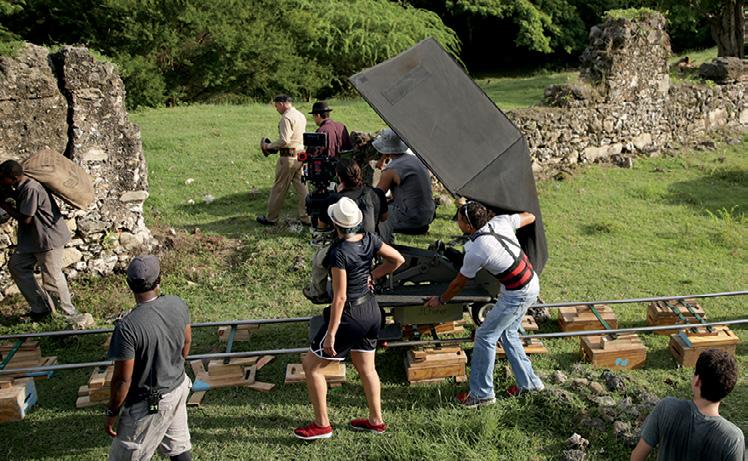

Rodolfo Benitez
Tiege Dolly
PRODUCTION DIRECTOR
Toni Kirkland
CIRCULATION & DISTRIBUTION
CircIntel
BOARD OF ADVISORS
Ivan Barrios, World Trade Center Miami
Ralph Cutié, Miami International Airport
Gary Goldfarb, Interport
Bill Johnson, Strategic Economic Forum
David Schwartz, FIBA
Bill Talbot, Beacon Council
EDITORIAL BOARD
Alice Ancona, World Trade Center Miami
Greg Chin, Miami International Airport
Paul Griebel, World Strategic Forum
Jerry Haar, Florida International University
James Kohnstamm, Beacon Council
John Price, Americas Market Intelligence
TJ Villamil, Enterprise Florida
Global Miami Magazine is published monthly by Global Cities Media, LLC. 1200 Anastasia Ave., Suite 217, Coral Gables, FL 33134. Telephone: (305) 452-0501. Copyright 2023 by Global Cities Media. All rights reserved. Reproduction in whole or part of any text, photograph, or illustration without o\prior written permission from the publisher is strictly prohibited. Send address changes to subscriptions@ globalmiamimagazine.com. General mailbox email and letters to editor@globalmiamimagazine.com
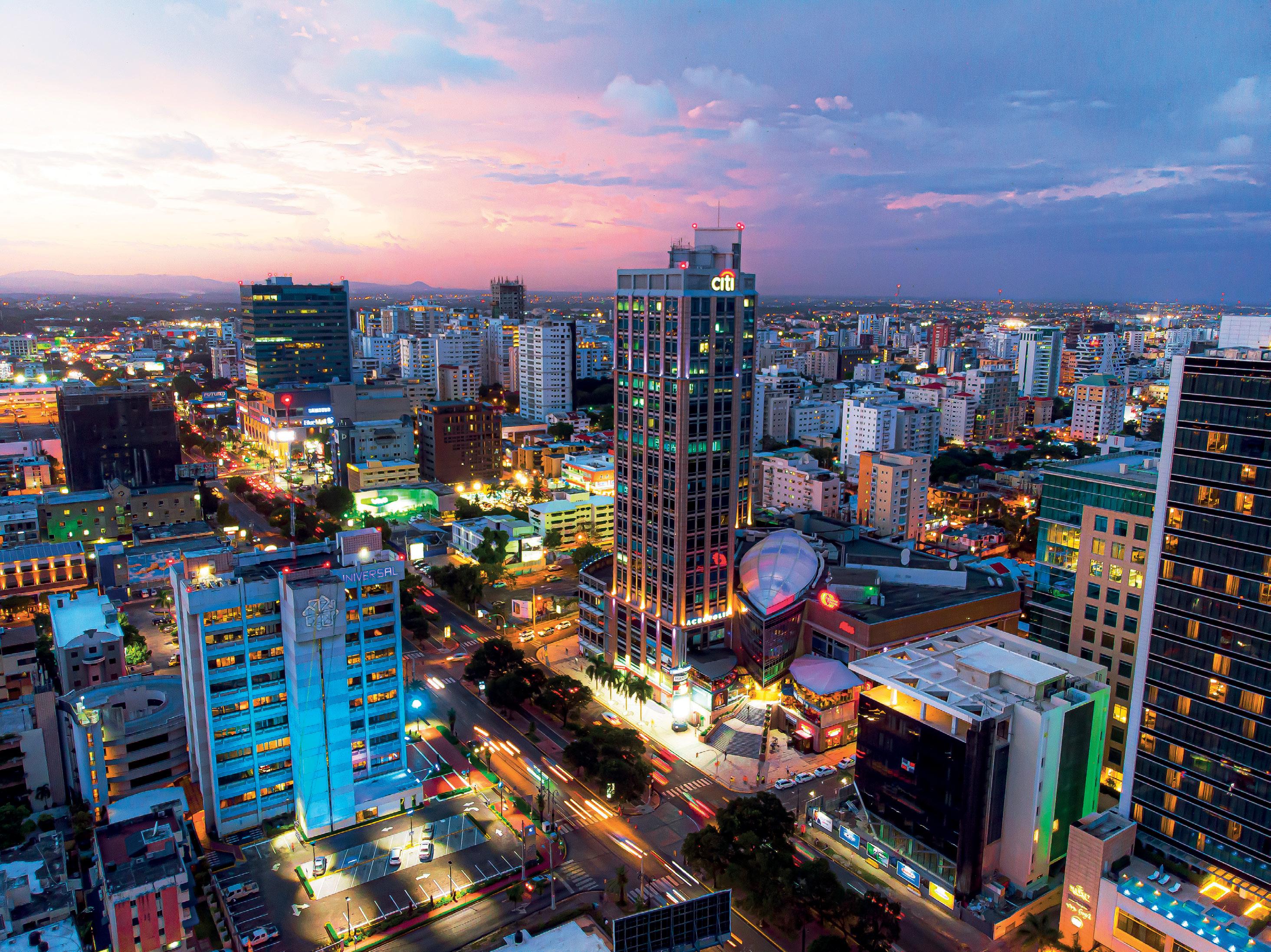
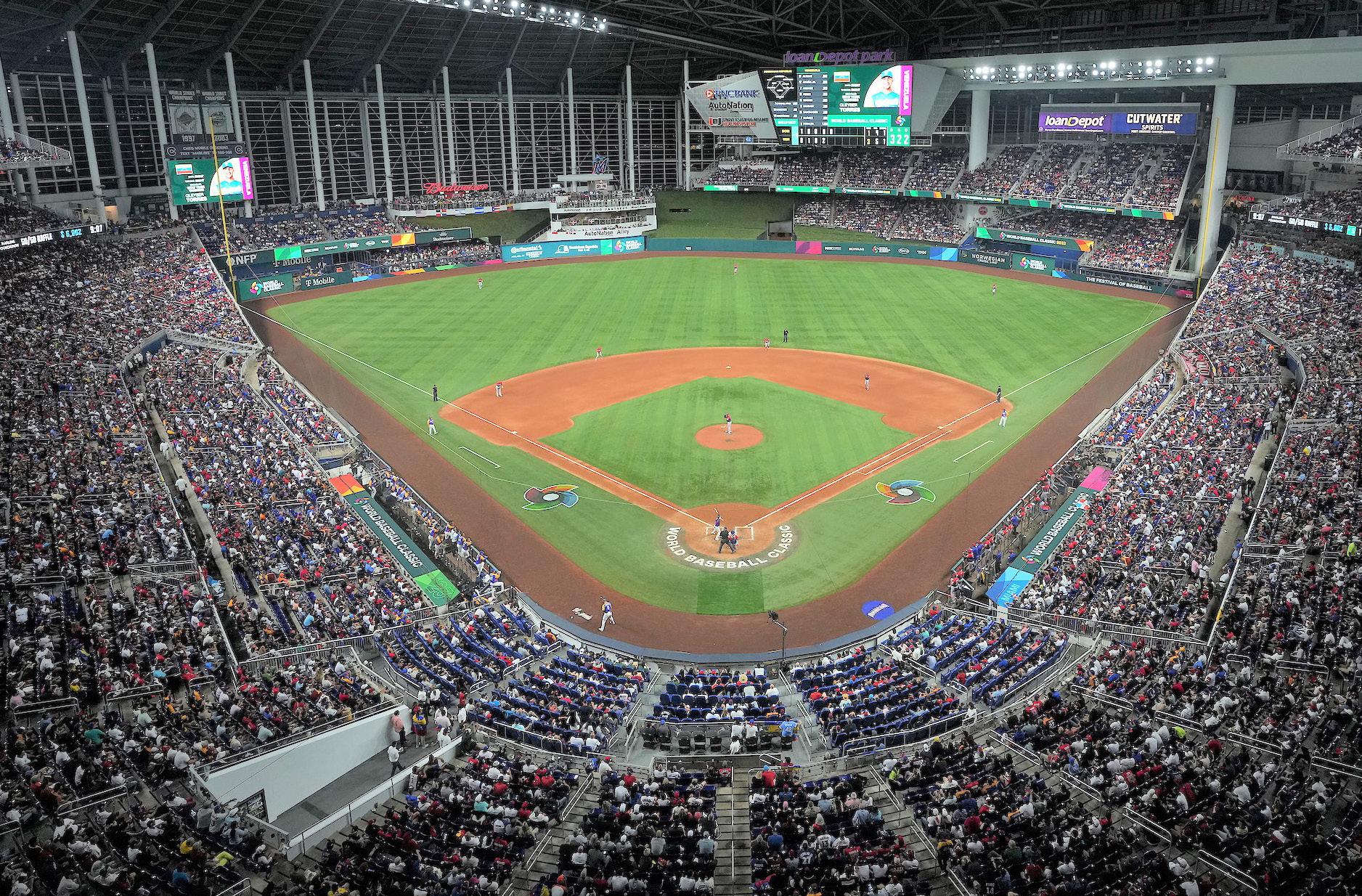
BY CAROLINE O’CONNOR President of Business Operations @ The Miami Marlins
As the World Baseball Classic 2023 came to end, I looked back on a monumental tournament that put an international spotlight on Miami. I marveled over the on-field excitement, from Japan’s Shohei Ohtani and USA’s Mike Trout facing off for the first time to the life-changing inning for Nicaragua’s Duque Hebbert that landed him a deal with a Major League Baseball team.
Throughout the entire WBC, fans filled the ballpark with unmeasurable energy and passion for each of the respective countries competing. The World Baseball Classic scored record-breaking attendance in Miami, with more than 475,000 fans checking out the action in Miami alone, setting records overall and round-by-round in the United States. Game after game was sold out from start to finish - culminating with our largest crowd of the tournament for the finale.
The World Baseball Classic was a success for Miami. The numbers confirm this. All eyes were on Miami and this year’s WBC shattered tournament viewership, attendance, and merchandise records. More than 150,000 hotdogs were consumed at loanDepot park and championship gear sold out in an hour after the final game ended. We also saw the rising popularity of the Brightline Home Runner with nearly 5,000 riders taking advantage of the free shuttle from MiamiCentral to loanDepot park. The demand was so great we added shuttles for fans Opening Day to accommodate the West Palm Beach, Boca Raton, and Ft. Lauderdale riders. Those who couldn’t make the game were incredibly active on social media and watching on TV. And there was baseball-fever not just in Miami but throughout all participating 20 nations, with nearly 30% of fans attending coming from outside South Florida.

The stars also came out to show support for their home teams. WBC ambassador and international music icon Daddy Yankee was spotted around loanDepot park from the first pitch to the last out. Everyone wanted to check out the action - from Marc Anthony and Luis Fonsi cheering on Puerto Rico, along with South Florida pro athlete stars from the Miami Heat, Miami Marlins, Miami Dolphins, Inter Miami CF and more. It was amazing to see Marlins legends like Edgar Renteria, Livan Hernandez, Ivan Rodriguez with Miami legends like Dwyane Wade. Miami born and raised stars like Flo-Rida also filled the seats.

I was fortunate to be inside loanDepot park for all 15 WBC games and experienced firsthand how impactful this tournament was for our city of Miami. Even if you only made it to one game, worked at the stadium, were a vendor who brought an aspect of the game to life, or a hotel or business that served thousands of visitors from outside South Florida, you know what I’m talking about. The WBC has set the tone for the beginning of baseball season and for years to come. A sixth WBC will come around again in 2026, and I think this year Miami more than put its best foot forward to again be a host city.
From Left to Right: Marlins President Caroline O’Connor, Commissioner Eileen Higgins, Mayor Daniella Levine Cava, Marlins owner Bruce Sherman
With the Miami Marlins season now in full gear, let’s keep the party going at loanDepot park. Whether it’s a family outing, a team building event for work or just a good old fashioned day out at the ballpark, we’re excited to see the South Florida community cheering on their very own Miami Marlins as we celebrate the team’s 30th anniversary. www.mlb.com/marlins/tickets

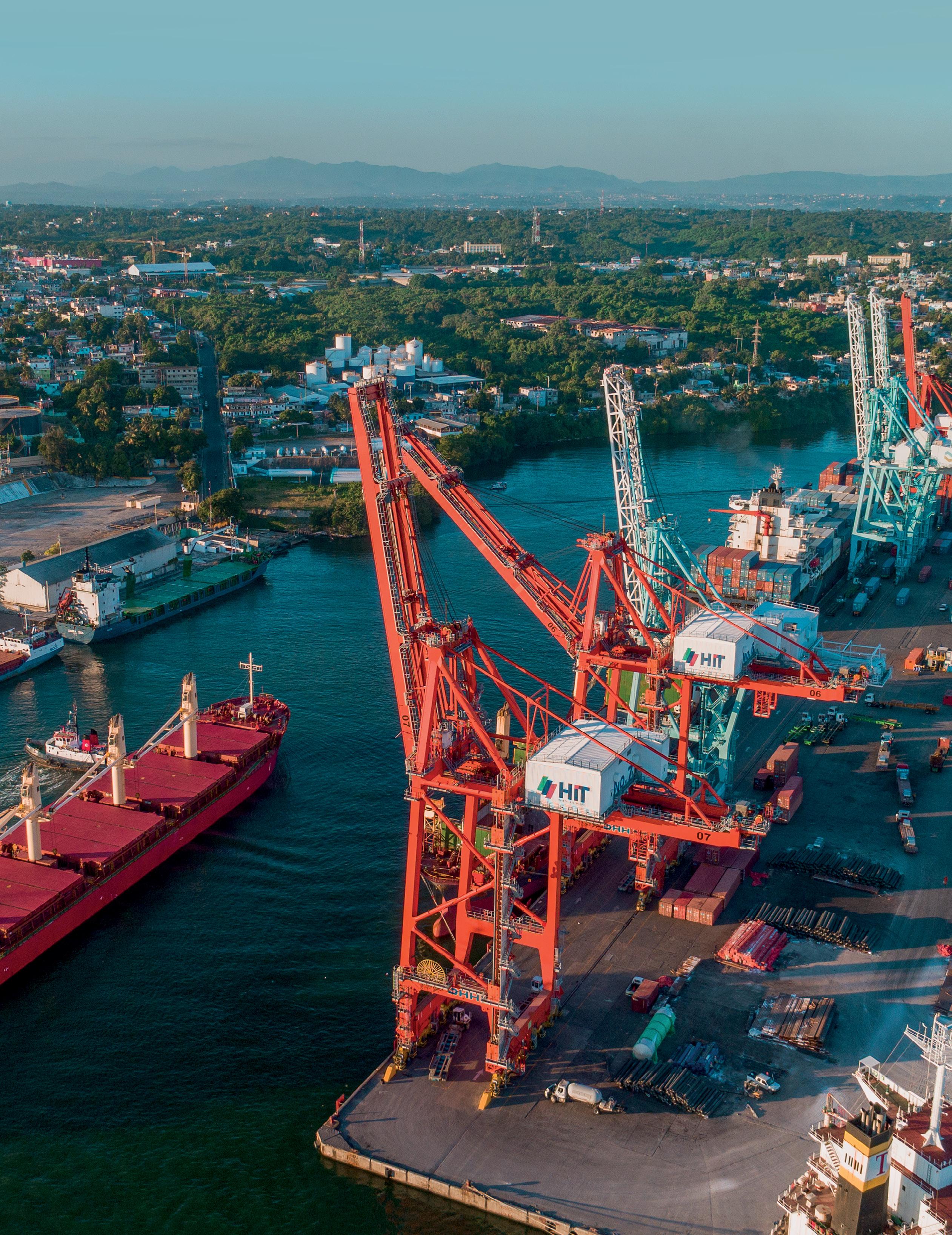
Haina International Terminals, known as HIT or Rio Haina Port
THE COUNTRY’S BUSIEST MULTI-PURPOSE SEAPORT FOR CARGO
With unparallel economic growth for decades, the DR now strives to become the logistics center for the Caribbean, and a “nearshoring” powerhouse of the Americas

BY
First came agriculture, then manufacturing and next, tourism. Now, the fast-growing Dominican Republic, the Caribbean nation known for quality cigars, medical device exports, and all-inclusive resorts, is embarking on a new economic frontier: logistics.
Building on strong international air and sea links, the well-connected country has set a goal of becoming a regional logistics hub – to produce, store, and trans-ship goods for the United States, the Caribbean, Latin America, and even Europe. Key to the effort: A $200 million-plus investment at its busiest airport in Punta Cana, aimed to send more cargo in the belly of passenger planes.
This new frontier may sound ambitious, but the Dominican Republic has a remarkable track record. It’s the country with the strongest economic performance in Latin America and the Caribbean over the past 50 years,
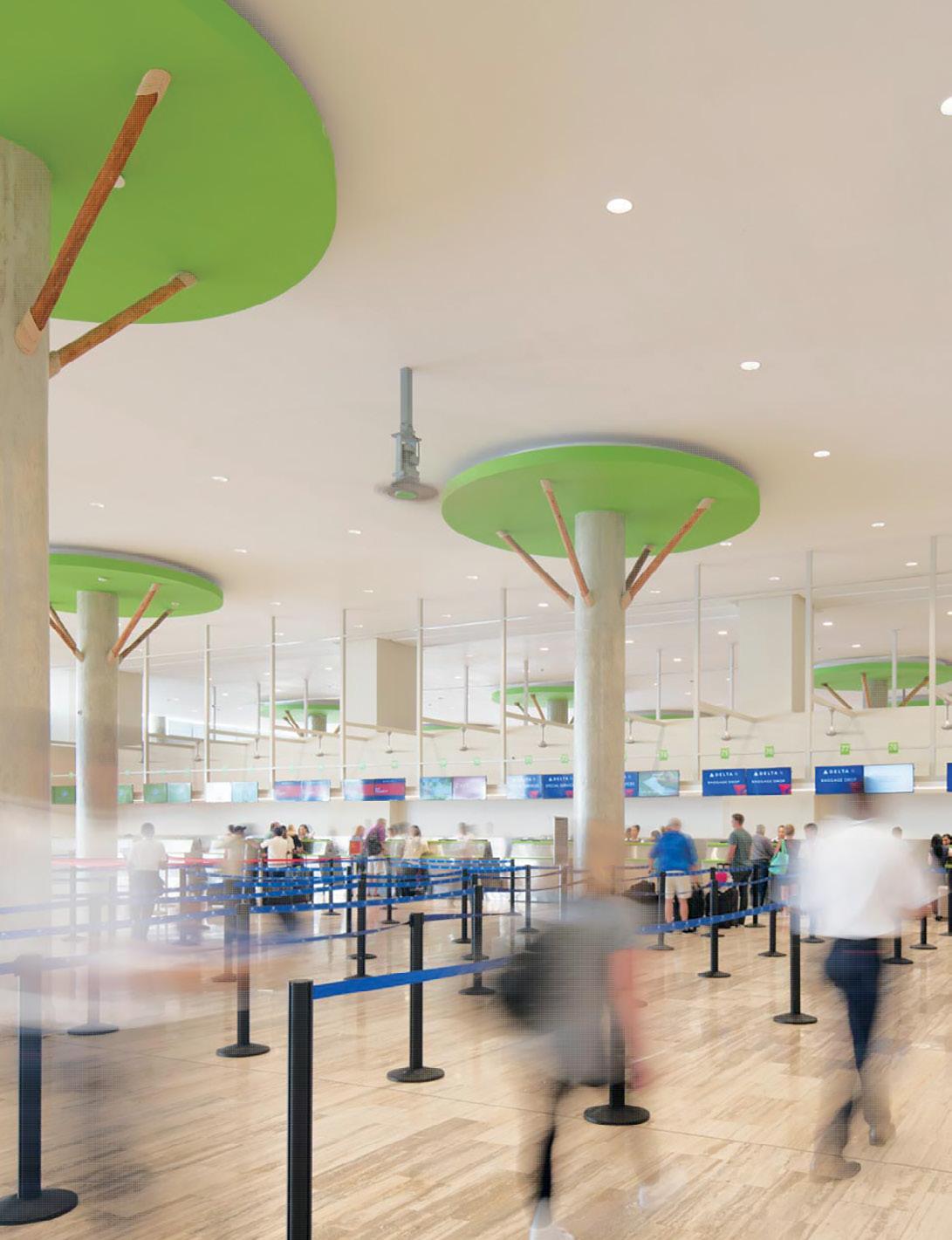
according to the World Bank. Growth has been averaging about 5 percent yearly for decades, as the nation has become a manufacturing center and the No. 1 tourist destination in the Caribbean. Foreign investment keeps flowing in, thanks to stability, tax incentives, and a capable workforce.
The timing is ideal for a logistics hub now, says Dominican warehouse and transport expert Alexander Schad. As tensions mount between the U.S. and China, more companies selling to U.S. consumers have been shifting production out of Asia and into the Americas in a trend called “nearshoring.” Manufacturing has grown so much in the Dominican Republic in recent years that many producers now keep their supplies and finished goods in local warehouses instead of U.S. facilities. Some even ship direct from Dominican factories to U.S. customers these days, using a “just-intime” program, says Schad.
“The response time to the U.S. is shorter here, so you can make those shoes you need in size 8, in red, and get them within days, instead of the weeks it would take to ship from Asia,” says Schad, CEO of Frederic Schad, the largest Dominican logistics firm, employing 1,300 full and part-time staff – up about 40 percent in the past decade. “With quicker response times, you don’t lose sales.”
What’s more, tourism to the Dominican Republic keeps rising – hitting yet another record so far this year. That means more passenger planes are available to carry out exports like tropical fruits and electronics and to bring imports needed for new hotels, homes, offices, and industrial parks.
“The COVID-19 pandemic proved that you need logistics. The world is integrated and globalized, and people want things now, no matter what,” says Francesca Rainieri, chief financial officer at private Grupo Puntacana, which owns Punta Cana International Airport and is teaming up with Dubai’s DP World on the $200
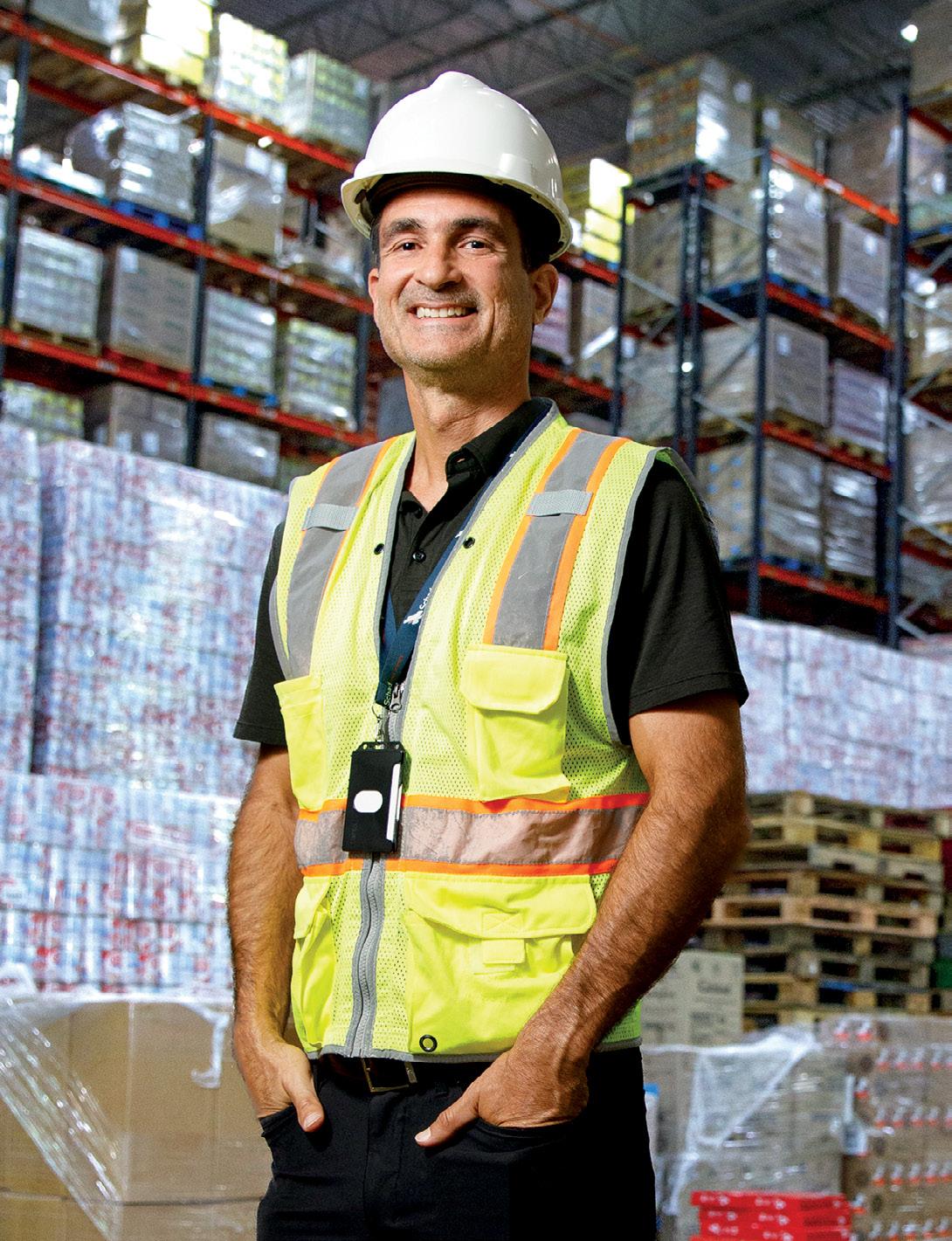
The response time to the U.S. is shorter here, so you can make those shoes you need in size 8, in red, and get them within days, instead of the weeks it would take to ship from Asia
million-plus investment. “And connectivity that’s close and direct reduces costs and time.”
The government and business community are united in the logistics push. President Luis Abinader, a data-driven economist and millionaire businessman who’s developed hotels and other ventures, is focused on modernization and efficiency to spur investment and grow the economy. His administration already has shifted customs documents online for 24/7 access, signed a new customs law to replace a decades-old one, and streamlined paperwork for investors, among other measures to help trade.
Customs Director Eduardo Sanz Lovaton, a business lawyer who left a top private law firm to join the administration in 2020, is working with ports to get cargo dispatched within 24 hours. He’s confident that as nearshoring and air freight grow, “we’ll be talking about logistics in the Dominican Republic next decade in the same way we talked about tourism 20 or 30 years back, as an important


Here in the Dominican Republic, 80 to 85 percent of wealth is held by the private sector...
MAXIMO VIDAL, DOMINICAN BANKER, HEAD OF CITIBANK IN THE DOMINICAN REPUBLIC
AREA: 18,704 square miles, about the size of Vermont and New Hampshire combined.
POPULATION: 11 million, similar to the population of Cuba.
ECONOMY: Total output (GDP) about $100 billion in 2022. Growth has averaged 5 percent yearly since 2000, the fastest in Latin America.
TOURISM: Top destination in the Caribbean, with 7.2 million air arrivals and 1.3 million cruise arrivals in 2022, a record. US is the top source of visitors. More than 86,000 hotel rooms.
FOREIGN INVESTMENT: $4 billion in 2022, a record, with the U.S. the biggest investor.
TRADE: The U.S. is the No. 1 trade partner and Florida the top partner within the U.S. The U.S. has had a free trade agreement with the Dominican Republic and Central America (DR-CAFTA) since 2007.
economic driver.”
Here’s a look at how this nation of 11 million people in the heart of the Caribbean became Latin America’s top economic performer, and at the economic pillars that support its plans to become a regional logistics hub, including connectivity, free-zone manufacturing, tourism, agriculture, and energy.
Ask executives how the Dominican Republic managed to outpace regional peers in economic growth over the past half-century, and most start with two words: democracy and stability. The country boasts uninterrupted democracy since the 1960s, with continuity in policy to attract foreign investment and increase exports. Protections for investors have been rising, says Bill Malamud, long-time executive vice president of the American Chamber of Commerce of the Dominican Republic, known as AmCham DR, one of the country’s largest and most respected business associations.
“There’s no political party radically left or right,” so government works consistently with business to build the economy long-term, says Boston-raised Malamud, who’s married to a Dominican. “And with the U.S. as the top trade partner and more than two million Dominicans in the U.S., it’s probably the most pro-U.S. country in Latin America.”
Government embraces business, partly because the Dominican state doesn’t control oil or mining resources that could give it outsized weight in the economy, says Maximo Vidal, the Dominican banker who has lead Citibank for the Dominican Republic and Haiti since 2005. The country imports its fuel, and even its large gold mine is being developed not by the state but by a private company, Canada’s Barrick Gold. “Here in the Dominican Republic, 80
Puerto
Some Investments from Miami companies in the Dominican Republic
CARNIVAL CORP.
$70 MILLION-PLUS
Cruise port Amber Cove near Puerto Plata
Opened: 2015
MIAMI MARLINS
$15 MILLION-PLUS
Baseball academy in Boca Chica Opened: 2022
CISNEROS GROUP
$250 MILLION-PLUS
Tropicalia resort, luxury real-estate in Miches
Opened: In Progress
KARISMA HOTELS
$130 MILLION-PLUS
Nickelodeon Hotels & Resorts
Punta Cana
Opened: 2016/20

Top Cargo Ports in the Dominican Republic *
to 85 percent of wealth is held by the private sector. We don’t have a PDVSA, Petrobras or Pemex,” says Vidal, referring to the state oil companies in Venezuela, Brazil, and Mexico that influence politics there. The Central Bank also acts independently, adding stability.
“I believe the Dominican Republic has the opportunity to double the size of our economy again in the next decade or so,” based on the strengths and new opportunities in logistics, tech, and other emerging sectors, says the veteran banker. “If we really want to do it, we can.”
The Dominican Republic is well-located for trade. It’s a two-hour flight to Miami and many cities in Central America and northern South America, three or four days by ship to Miami and regional Latin American cities, and near the Panama Canal, allowing goods shipped from Asia to be unloaded and sent on to other ports.
But location is not enough to build a logistics hub. What’s needed are frequent flights and sailings, so shippers have options to get cargo in and out regularly and travelers have lots of transport options as well, according to Erik Alma, CEO and chairman of Haina International Terminals, known as HIT or Rio Haina Port. HIT is the country’s busiest multi-purpose seaport for cargo, from electronics and grains to heavy equipment and containerized freight.
Alma says the Dominican Republic has built up the necessary frequency in recent years, both at seaports and airports. “We have at least 30 shipping lines that call at HIT. Sixteen sailing options leave the port every week for the U.S., so you have this tremendous level of frequency and connectivity,” he says Alma, whose port next to Santo Domingo handles much of the freight for the nation’s
*HIT Rio Haina Port
Capacity: 800,000 TEUs
Volume 2022: 500,000 TEUs
Loose Cargo: 8 million tons
DP World Caucedo
Capacity: 2.5 million TEUs
Volume 2022: 1.6 million TEUs
Transits: 860,000 TEUs

We have at least 30 shipping lines that call at HIT. Sixteen sailing options leave the port every week for the U.S...

industrial free-zones.
Punta Cana International Airport has so many flights – more than 500 per week – that it now ranks as the second busiest tourist airport in the greater Caribbean, trailing only Mexico’s Cancun. Last year, Punta Cana handled eight million-plus passengers in and out, with direct flights to 90 destinations across the Americas, Europe, and beyond.
In all, the Dominican Republic has eight international airports and 12 cargo seaports that together handle $30 billion-plus in trade annually. The two busiest seaports, Rio Haina Port and DP World Caucedo, have invested more than $400 million in recent years to expand and modernize, adding new cranes and inspection machines, for instance. While HIT focuses more on shorter routes, Caucedo mostly handles containers for longer-hauls, often trans-shipping freight arriving from Asia onto Europe.
Seaports developed their strong connectivity partly because of the boom in manufacturing for export in free zones, which offer exporters exemptions from import duties and taxes. The zones took off in the 1980s when their job count reached 100,000. Back then, most parks sewed clothes for U.S. sale, from Dockers to T-shirts.
Today, nearly 200,000 people work in 80-plus free zones nationwide, sending more than $7 billion in goods overseas yearly and providing such export services as modern call centers. Medical devices are the top export product, and even apparel makers in freezones have become more sophisticated.
HanesBrands, which started sewing operations in free zones in the 1980s, for example, built the largest textile mill in the Domini-

It’s not just big global airlines developing tourism, cargo, and logistics in the Dominican Republic. There’s a new local player that’s rapidly expanding routes in Latin America and aims to enter the U.S. market to serve Puerto Rico, New York, and Miami.
In the making for 10 years, low-cost carrier Arajet began operations in September. The Santo Domingo-based airline has already flown more than 180,000 passengers to 17 destinations in Central and South America, Mexico, and the Caribbean, says founder and CEO Victor M. Pacheco Mendez, formerly with charter operator Dominican Wings.
Arajet has funding from heavyweights Bain Capital, Griffin Asset Management, and others for “around $3 billion to guarantee a fleet of more than 40 aircraft in five years,” Pacheco says. It now operates five new, leased Boeing 737 MAX-8 aircraft, equipped with more fuel-efficient and quieter CFM LEAP-1B engines. Plans call for doubling the fleet to 10 aircraft by the end of this year.
So far, about 60 percent of Arajet passengers are Dominicans at homeland and abroad, with Colombia and Mexico the busiest routes. “Our main goal is to operate 17 destinations in the U.S.,” Pacheco says. “We are waiting for the Dominican Republic and U.S. governments to sign an Open Skies treaty that will provide Arajet with a series of conditions that we need as an ultra-low-fare airline.” With Florida a top spot for Dominicans and for tourists to the Caribbean, it hopes to start up in Miami later this year.
Pacheco says his biggest challenge is managing costs to keep fares low, a practice that requires his team monitor seasonal demand and juggle both point-to-point service and connecting flights. “We are working tirelessly to evolve,” says Pacheco, “and turn the Dominican Republic in the new lowcost, connecting hub in the region.” l
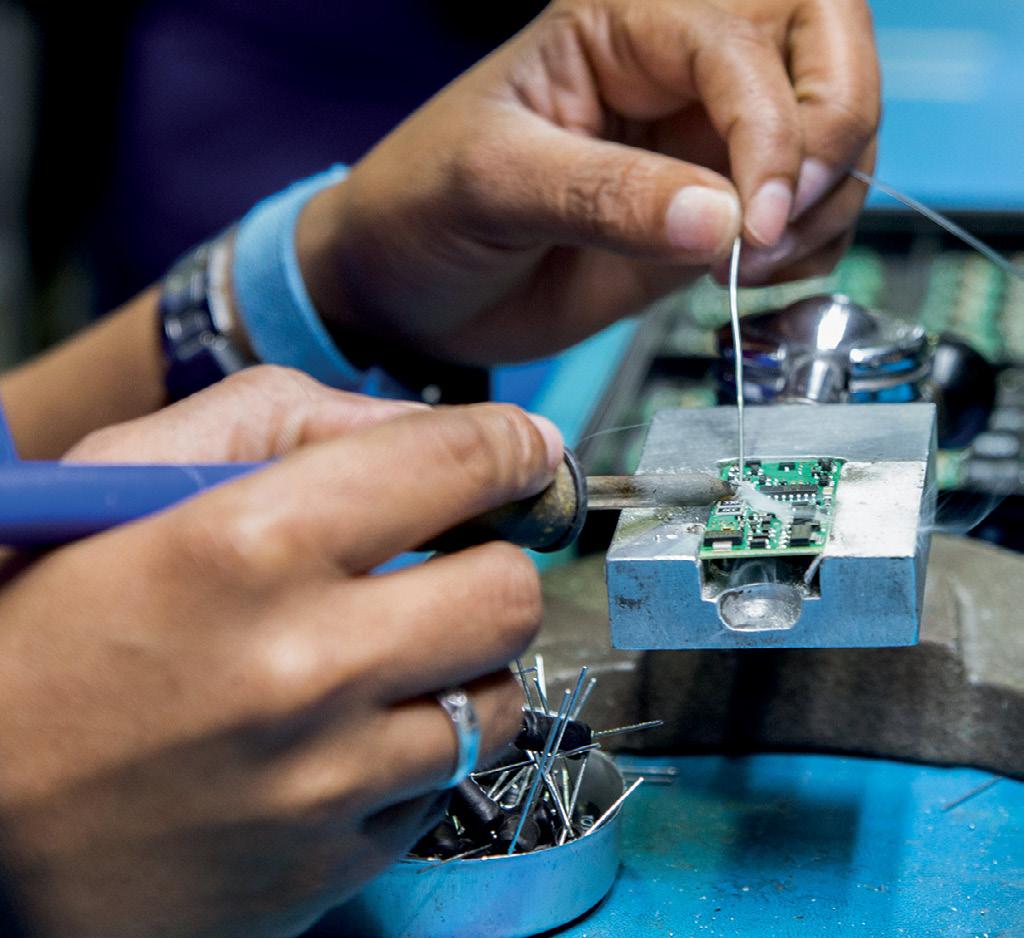
Medtronic. Eaton. Timberland. Fruit of the Loom. Baxter. Rockwell Automation. The list of manufacturers in the Dominican Republic’s 70-plus “free-zones” reads like a who’s who of global brands, and many are expanding now to provide “nearshoring” for buyers in the Americas.
Consider Medtronic, the world’s largest medical device maker. The Minneapolis-based company reported revenues topping $31 billion worldwide in 2022. Medtronic started in the San Isidro Free Zone in 1998 to produce sutures. Today, it employs some 4,300 people at four Dominican plants –roughly half of them, women – making varied items. Its total investment in those plants: more than $160 million, with $46 million for the latest one that opened in 2018.
“We chose the Dominican Republic for two important factors: a highly skilled workforce … and the political-economic stability of the country,” country manager Manuela Uribe told a recent investment conference in Santo Domingo.
Eaton, the American-Irish electric equipment maker with sales topping $20 billion worldwide, has been operating in Dominican free zones since the 1980s and now employs more than 5,000 people in those plants. In 2022, Eaton opened an industry design and development center near its plants and the Technological Institute of Santo Domingo, aiming to serve Eaton customers across the Americas. The company has partnerships and internship programs with the Tech Institute and other local schools.
“We’re proud to be the first electrical manufacturer in the Dominican Republic with a dedicated hub for design innovation,” said Eaton’s engineering manager Luis Valeiron. The design center supports product development for Eaton’s key products lines, including industrial control equipment.
From Florida's Tampa Bay area, Oscor, a maker of medical diagnostic devices, is investing $10 million, aiming to boost employment at its Dominican plants to reach 1,500 people in 2024. l

can Republic to produce some of its own fabric locally. It also dyes, cuts, and sews cloth to make garments, employing thousands of workers. Today, its fabric mill runs partly on biomass, such as coconut shells and wood remnants, reducing the need for fuel imports, says Jerry Cook, vice president of government and trade relations for the North Carolina-based apparel powerhouse which has global sales topping $7 billion a year.
“The Dominican Republic has done so many things right,” Cook says. “They’ve built out apparel and textiles as they developed other industries [rather than] phase out apparel as some countries have. And they’ve been very purposeful to work with industry to provide what we need, administration after administration… There’s an idea of growth for the long-term, built on government, business, and people as partner. And everyone is focused on the future.”
That evolution is clear at Zona Franca de las Americas, located near Santo Domingo’s international airport and the sprawling DP World Caucedo seaport. Las Americas launched in 1986 and initially produced mostly clothes and shoes for export. It now hosts 35 factories employing 21,000 workers, with many companies making medical supplies such as dialysis and intravenous kits. The Dominican Republic produces so many medical goods that it’s now set up a facility to sterilize those items locally. “We no longer need to send those medical devices overseas for sterilization, saving time and money,” says Las Americas Free Zone project manager Luis Manuel Pellerano.
Bela G. Szabo, the new CEO at Las Americas Free Zone, sees future opportunities in attracting both more suppliers of current manufacturers and expanding into new industries, especially in automotive parts like Mexico has. At least one Japanese auto supplier is now considering the Dominican Republic to make auto parts for U.S. sale, government officials said after a recent trip to Japan and South Korea that promoted nearshoring. The Las Americas Free Zone also is diversifying revenues by welcoming more tenants that
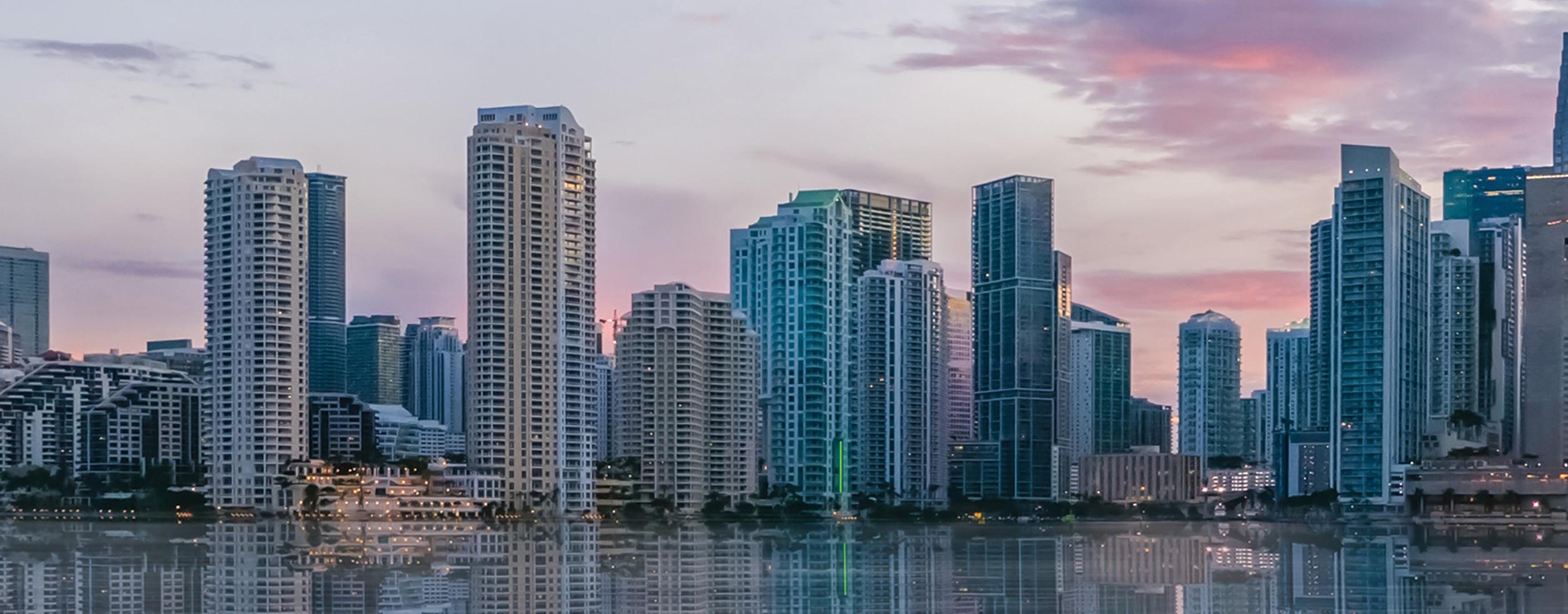
World Trade Center Miami, the largest and oldest trade association in Miami, is part of the World Trade Center Association global business network of 315 World Trade Centers in 92 countries with over two million members.
Whether your business is looking to find your next customer, expand to international markets or make global connections we have the resources, services and decades of expertise to successfully grow your bottom line.
• The annual Americas Food and Beverage Show now in its 27th year – the ideal meeting place for decision makers and buyers from all sectors of the global food and beverage industry.
• The Air Cargo Americas Show, now in its 17th year, held bi-annually, brings together top executives from all sectors of the aviation and logistics industry.
• The Supply Chain Americas Conference is held annually and in conjunction with the Air Cargo Americas Show is one of the leading events focused on innovation and resiliency in the global supply chain.
SCHEDULE OF EVENTS:
• Americas Food & Beverage Show: September 18-20, 2023 Miami Beach Convention Center
• Air Cargo Americas/Supply Chain Americas Show & Conference: October 31-November 2, 2023
• State of the Ports: November 2023





A giant in all-inclusive resorts, the Dominican Republic was hardly a player in cruising a decade ago. But that all changed when Miami-based Carnival Corp. joined with the country’s Rannik Group to develop Amber Cove, the cruise port in Puerto Plata on the nation’s north coast that opened in 2015.
Carnival Corp. invested more than $70 million in the cruise port, lured by easy access from Miami, links to existing cruise routes, beautiful landscapes nearby, and “the people: some of the nicest you can meet,” says Juan Fernandez, vice president of operations strategy for global port and destination development.
Last year, Amber Cove welcomed more than 700,000 cruise passengers (plus 300,000 crew), making up more than half of all cruise arrivals in the country. “A lot of our guests spend the entire day at our port,” which offers restaurants, shops, a swim-up bar, over-the-water cabanas, and a zipline, he says. The 25-acre facility employs 120 people directly and 800 more indirectly, from restaurant servers to taxi drivers.
Carnival Corp. now is adding solar panels to produce the bulk of energy used at Amber Cove, and it’s bullish on the Dominican Republic. “We feel the government is very pro-business,” says Fernandez. “And that’s a huge benefit.”
The government is building a new cruise port in the country’s southwest: a $100 million-plus venture at Pedernales-Cabo Rojo. Designed to handle 1 million visitors a year, it will be run by the Dominican Port Authority with Mexico’s ITM Group, which also manages cruise ports at Mexico’s Costa Maya in the Yucatan and Dominican Republic’s Taino Bay in Puerto Plata. Among companies planning to call at Pedernales starting 2024: Miami-based Norwegian Cruise Line. DR President Luis Abinader says the new port will help his nation become “the cruise hub of the Caribbean.” l

offer services to factories, from finance to insurance, says Szabo.
“We have a unique opportunity now in the Dominican Republic after the pandemic and supply chain disruptions,” says Szabo. “By developing as a logistics hub, with more volume and connectivity, we can further cut transport and inventory costs, making us more competitive.”
The logistics drive also is rooted in tourism, especially in booming Punta Cana, the nation’s tourism mecca. A half-century ago, Punta Cana was an undeveloped area considered remote from the capital city. In 1969, a private group of U.S. partners bought a large beachfront swath there, slightly larger than Manhattan. Joining with Dominican entrepreneur Frank Rainieri, the group welcomed Club Med as their first big resort in 1981 and opened their private airport in 1984, a move many called fool-hardy at the time.
“It’s the first international, private, commercial airport in the world, because no government wanted to put an airport in the middle of nowhere. And at that time the concept of concessions didn’t exist” for private companies to operate public-owned airports, explains CFO Francesca Rainieri, one of Frank’s children in the business.
Today, greater Punta Cana has nearly 50,000 hotel rooms for such brands as Spain’s Melia and Iberostar, and Florida’s Margaritaville and Hard Rock. That’s nearly as many as the 66,000 rooms in Miami-Dade County, an area that developed for tourism for twice as long. At least a dozen more hotels are planned in greater Punta Cana, including the country’s first W Hotel, an all-inclusive project by hotel giant Marriott in partnership with MAC Hotels and Grupo Puntacana. Opening for the 349-room W is set for 2025, part of Marriott’s push into luxury, all-inclusive resorts worldwide.
+250,000 SQM
Dry, fresh and frozen storage.





+10,000 employments
Specialized labor.
Integrated logistics services reception, transportation, customs, added value and last mile.
Logistics operating companies +100 years of experience.
Located in the City of Santo Domingo, enabling cargo micro distribution nationwide.





With more than 10 million local consumers and 7+ million tourist a year, its geographic location, air-sea and land connectivity, logistics infrastructure, legal frame and economic growth and stability, the Dominican Republic is the ideal place to relocate your production and/or establish your regional distribution center.
The Haina Logistics Hub (HLH) is the perfect Logistics Activity Zone in the Dominican Republic to supply the demand of both your local and regional actual and target markets from a single and specialized location.
(US$ million)
Source: ProDominicana market data, Central Bank data

Zones
from the Dominican Republic
(US$ million)
Source: ProDominicana market data, Central Bank data
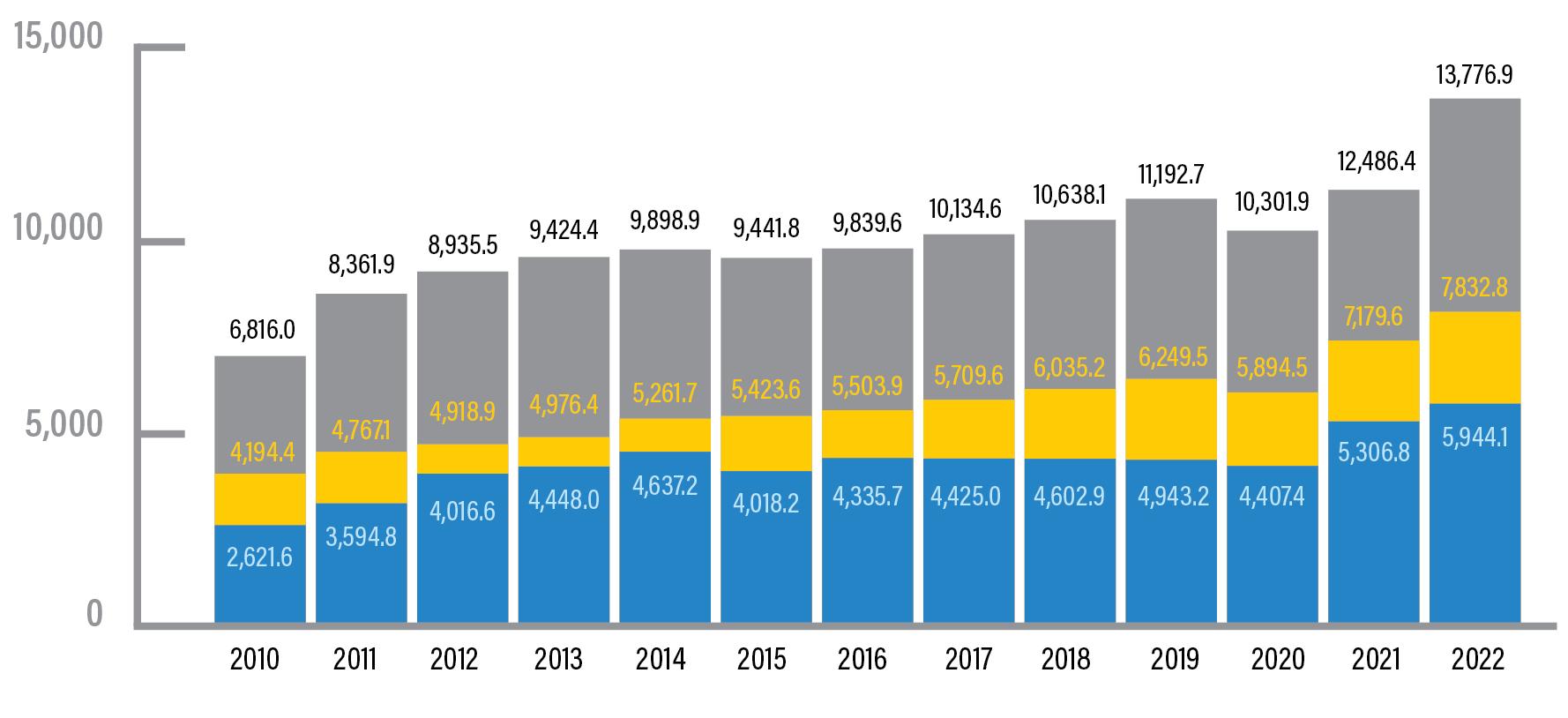
Also expanding is Miami-based Karisma Hotels & Resorts, which operates three of its 23 properties worldwide in the Dominican Republic. Karisma owns Nickelodeon Hotels & Resorts Punta Cana, a luxury, all-inclusive complex for families, with 460 suites and a villa called the Pineapple, inspired by SpongeBob Square Pants’ home. It also runs Margaritaville Island Reserve Cap Cana’s two luxury, all-inclusives: Hammock for families and Waves for adults-only, together offering 500-plus rooms and 40 villas.
Karisma plans two more Dominican hotels, though details have not been released. “The biggest surprise of doing business in the Dominican Republic has been how friendly the government is to the hospitality industry. They have some fantastic programs that encourage investment and fuel the industry,” says Frank Maduro, president of Miami-based Premier Worldwide Marketing, the sales and marketing representative for Karisma. He suggests investors “lean on” government incentives to grow.
All those hotel rooms need air lift for guests, and that’s where the private Punta Cana International Airport comes in. About 15 years ago amid global recession, Grupo Puntacana began suggesting that passenger airlines add cargo to boost their revenues, taking out tropical fruits and flowers and bringing in needed hotel supplies. “It started because we wanted to make sure the airlines didn’t take away routes” in tough times for tourism, says CFO Rainieri.
Now, the group is taking that idea further by partnering with DP World to launch Punta Cana Free Trade Zone and Logistics
Hub at the airport, an area that will provide space for warehouses, manufacturing, call centers, tech ventures, and even a maintenance operation for commercial jets. The plan is to handle not just cargo made in, or bound for, the Dominican Republic, but also to offer the airport’s connectivity to regional neighbors, likely flying out fruit and flowers from Colombia and Ecuador to the U.S. or Europe.
“We want to make this hub the most efficient, with the highest standards,” teaming with seaports for those shippers who want to combine more expensive, faster air links with slower, more affordable sea routes, says Rainieri. “We’re building on our business foundation step by step.”
Grupo Puntacana is stoking demand for freight too. It just bought land in Miches for two major resorts and plans several, ultra-luxury boutique hotels on its original property. For local workers, it’s building a community with 20,000 units of affordable housing “that we don’t make a penny on, in a social-responsibility project to ensure the area is sustainable and improves quality of life,” says Rainieri.
At airports and seaports nationwide, perishables are central to logistics. Long before tourism took off, agriculture sustained the economy, especially its “dessert” exports of sugar, coffee, tobacco, and cacao. The country remains one of the world’s top exporters of premium cigars ($1 billion-plus yearly), but agriculture has shifted






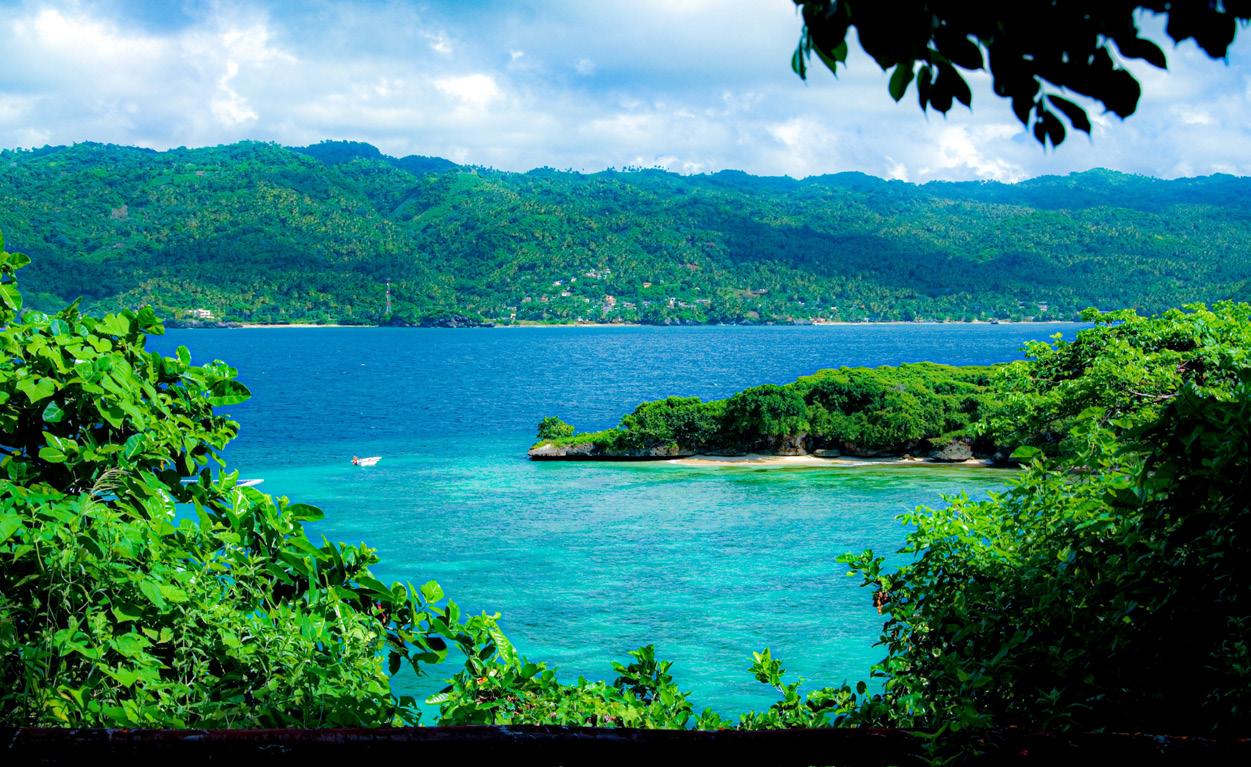

more toward non-traditional fruits for export, such as avocados and papayas sold in the U.S., Canada, Europe, and beyond.
“Non-traditional agriculture really expanded with the Dominican Republic-Central America Free Trade Agreement (DRCAFTA) with the United States,” says Malamud of the AmChamDR. That accord that took effect in 2007 and eliminated most duties on Dominican sales to the U.S. market. “Avocados, tomatoes, cucumbers, mangoes – anything you can grow in a greenhouse – the country now produces for export,” he says. Dominican sales got an indirect boost too, when the U.S. government provided technical assistance to help develop refrigerated capabilities known as “coldchain” to facilitate farm exports to U.S. consumers.
The Dominican Republic has trade accords similar to DRCAFTA with some 50 nations, including in the European Union, the United Kingdom, and in the Caribbean Community, easing sales of local goods abroad, says ProDominicana, the government’s organization to promote exports and investments. Under President Abinader, the agency is looking beyond helping individual companies and instead promoting a broader portfolio at trade shows.
“With our new strategic approach, we center our efforts on understanding how we can improve services that the country offers investors. We’re looking to expedite processes, avoid duplicate procedures, and offer greater security in regulatory matters,” says ProDominicana Director Biviana Riveiro, a business attorney. That approach helped launch the new One-Stop Investment Window and online registration for investments, among other initiatives for agriculture and industry, she says. The country also touts improving infrastructure, from solar energy parks and high-speed internet to new highways and Santo Domingo’s expanding subway network.

To be sure, there are hurdles to becoming a regional logistics hub, such as staffing. Business leaders see weakness in Dominican public education, including English-language skills. There’s already a need for more logistics specialists, sparking this year’s launch of a National Institute of Port and Logistics Training, says HIT chief Alma.
As the logistic hubs evolve and more Dominican factories enter e-commerce chains with the U.S., “the challenge is to do quick-turn business and build out the logistics model,” enhancing digital links and information flows, adds HanesBrands’ Cook.
Regional competition also abounds. Yet logistics specialist Schad sees a clear advantage for the Dominican Republic over its neighbors: market size. No other Caribbean or Central American neighbor has the critical mass of 11 million residents, 8 million-plus tourists yearly, and 80-plus free-zones producing exports. “And what’s behind our strong, growing market is Dominican joy,” says Schad, “a positive attitude and smiles that attract not only tourists but investors.”
Grupo Puntacana’s Rainieri points to the COVID-19 pandemic as an example of how the country meets challenges. Thanks to aggressive vaccinations, safety protocols, and strong public-private cooperation, the Dominican Republic was among the first to reopen to tourism in 2020 and quickly set new records for passenger arrivals, earning recognition from the World Tourism Organization. “The Dominican people are resilient. We’re looking for solutions,” says Rainieri. “And we’re in our best moment now, because everyone is aligned and working together to help grow and develop the country,” with logistics as the latest international frontier. l






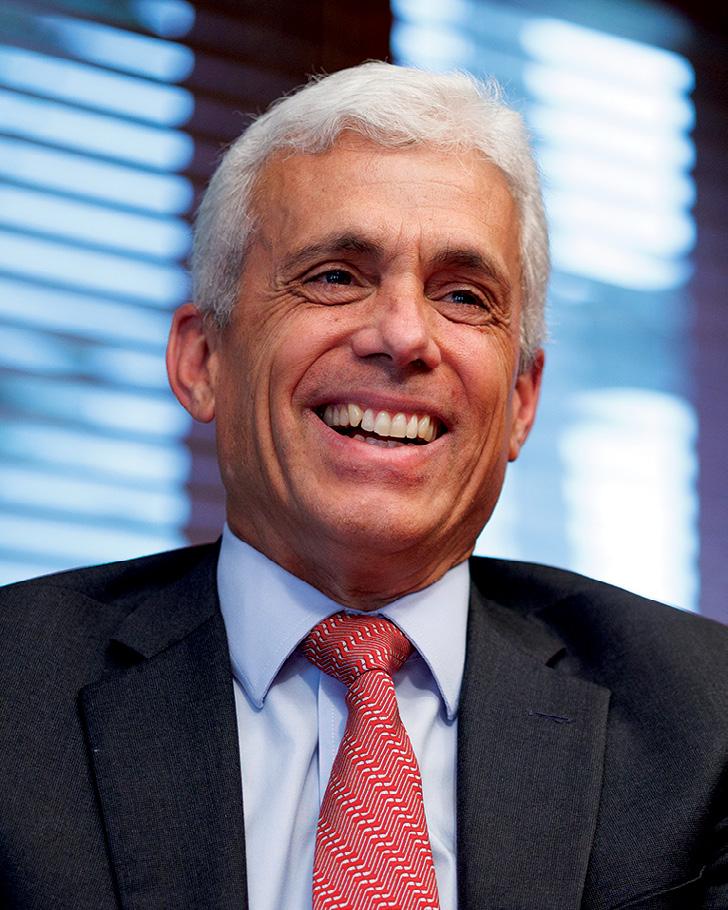

Even in countries that embrace foreign investment, there are challenges to doing business. Permits may take longer than expected, and business culture may differ.
Bilingual, bicultural lawyer Alejandro Peña Prieto helps foreign investors navigate those challenges in his Caribbean homeland. A Dominican attorney with a masters from Harvard Law School, he’s managing partner of the Santo Domingo office of Ohio-based law firm Squire Patton Boggs, which has 40-plus offices on four continents. He’s also current president
What are the most common mistakes you see foreign investors make in the Dominican Republic?
It depends on the industry and the location within the country, but basically, it’s not doing your due diligence. In real estate, for example, some people buy a coastal lot outside of a resort community and then find the property has title problems or encroachment issues. Sometimes, getting permits can be cumbersome, especially for environmental purposes, land use, or construction.
With our local governments there’s a lack of consistency in the norms. Local taxes known as arbitrios differ across municipalities, which can be a challenge if you’re a telecommunications company building towers or a power company putting in electric lines in different areas of the country.
Obtaining permits also can take time. The current administration is working on reducing bureaucracy with its Zero Bureaucracy and One-Stop Investment Window programs, but delays do occur. The mining sector, which brings in significant foreign exchange from gold and nickel, has faced issues.
of the Dominican Association of Foreign Investment Companies known as ASIEX, which groups some 70 of the country’s largest overseas investors. He’s also past president of the American Chamber of Commerce of the Dominican Republic, dubbed AmCham-DR, one of his country’s oldest, largest, and most respected business groups.
Here’s our chat about common mistakes that foreign investors make, how to avoid them, and insights on business culture in the land of bachata and merengue music.
What do you suggest to avoid those problems?
It may sound self-serving, but get good counsel. Don’t mistakenly encourage corruption. And know who you are doing business with. Check with business associations, such as ASIEX or AmCham-DR. And if you’re an American citizen, check with your diplomatic corps. The U.S. Commercial Service here is very active, well-connected with the government, and very influential. By all means reach out to them. Having a local partner helps, though it’s not indispensable. A good local partner can add local know-how.
Are there any particularities about Dominican business culture?
We’re Latin and warm, but we’re very Americanized at the same time. We don’t have a siesta tradition or close down for lunch here. Still, the personal element is important. In Dominican Republic, we live in an intricate social web. We have layers upon layers of family and social relationships that go back generations. So, sometimes it’s hard for a foreigner to understand the way things do or don’t work, or the way people act or refrain from acting, because of those relationships. l

F
oreign investment is a two-way street, and these days, top Dominican companies are setting up overseas as well. Among them: the country’s largest commercial bank and its biggest producer of cocoa.
Banco de Reservas, the 82-year-old bank known as Banreservas, is setting up in Miami, part of an effort to facilitate links with the Caribbean nation, especially money sent back by Dominicans living abroad.
The state-owned bank opened its first overseas office in January in Spain, the center of the Dominican diaspora in Europe. It now awaits U.S. government approvals to open in New York and Miami, home to the largest Dominican communities in the U.S., says Banreservas administrator Samuel Pereyra.
Dominicans overseas play a significant role in their homeland’s success, sending back billions of dollars a year to family and friends and often buying second-homes or investment properties in the country. Their remittances often come when Dominican families need them most, for example, during the COVID-19 pandemic when tourism halted briefly and then took months more to recover. Remittances in 2021 topped $8 billion and rose to $10 billion last year, according to government data.
In Miami, Banreservas plans to open a representative office on Brickell Avenue near the long-time Dominican consulate. Besides remittances, the office will help with mortgages on Dominican properties and payments to Dominican exporters, among other services – often saving folks a trip back to the Caribbean for paperwork. The actual banking behind the services will be done in Dominican Republic.
In New York, the Banreservas office is slated for Washington Heights, an area in upper Manhattan where many Dominicans live. In all, the U.S. is home to more than 2 million people born in the Dominican Re-

public or of Dominican heritage, making the group the fifth largest among U.S. Latinos.
New York is home to the first overseas locale for Rizek Cacao, the largest Dominican producer and exporter of cocoa, or cacao in Spanish, the main ingredient in chocolate. The family business opened a shop in Brooklyn to sell its certified organic chocolates, and keeps a warehouse to offer beans, cocoa butter, and other cacao ingredients to fellow artisanal chocolate makers.
The family’s story parallels how the Dominican economy has progressed – from farming to manufacturing, tourism, and logistics. It began in the early 1900s when two brothers from Palestine moved to the Dominican Republic, seeking opportunity.
Banco de Reservas, known as Banreservas, is setting up in Miami in an effort to facilitate links with the Caribbean nation. The state owned bank is awaiting U.S. government approval to open.
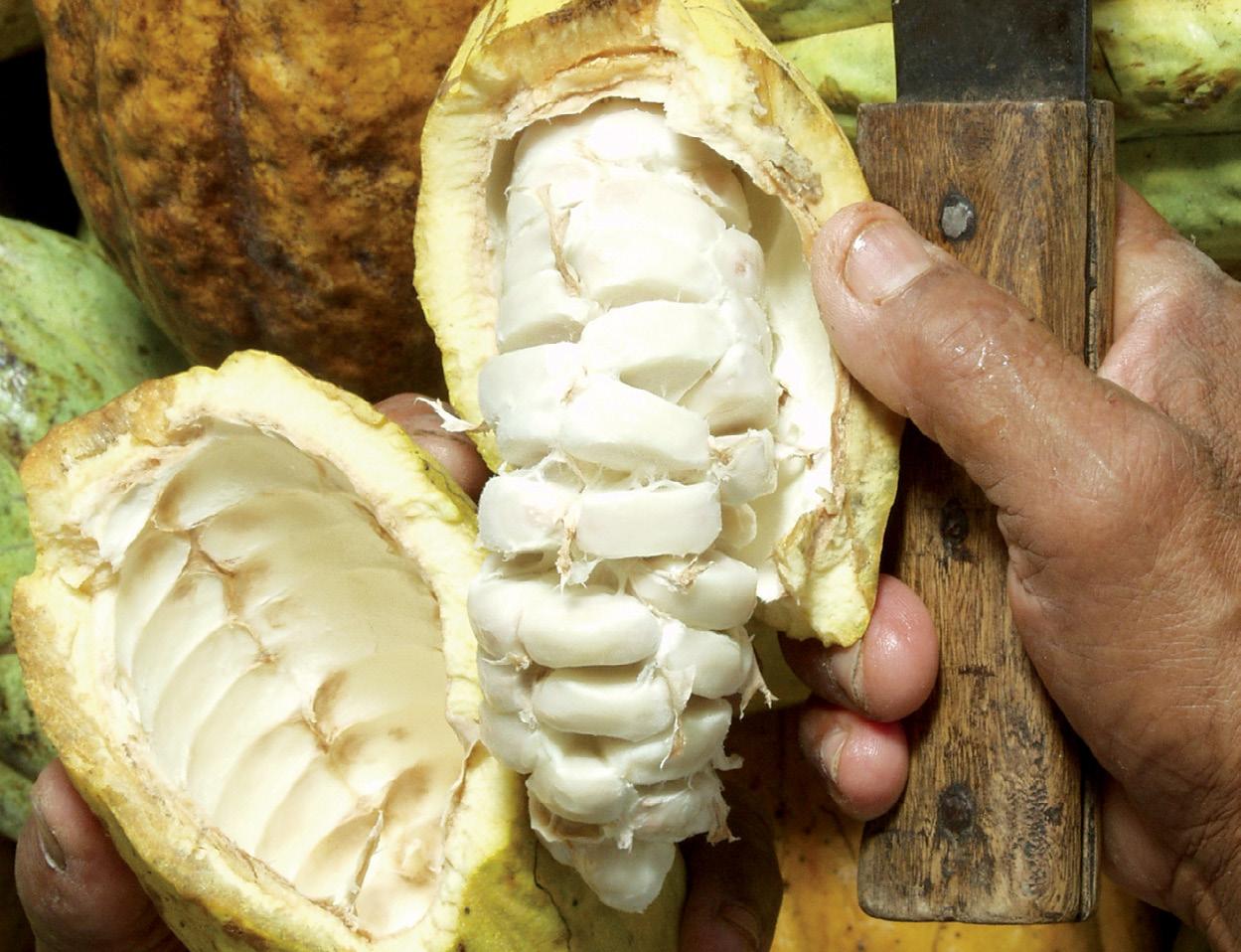
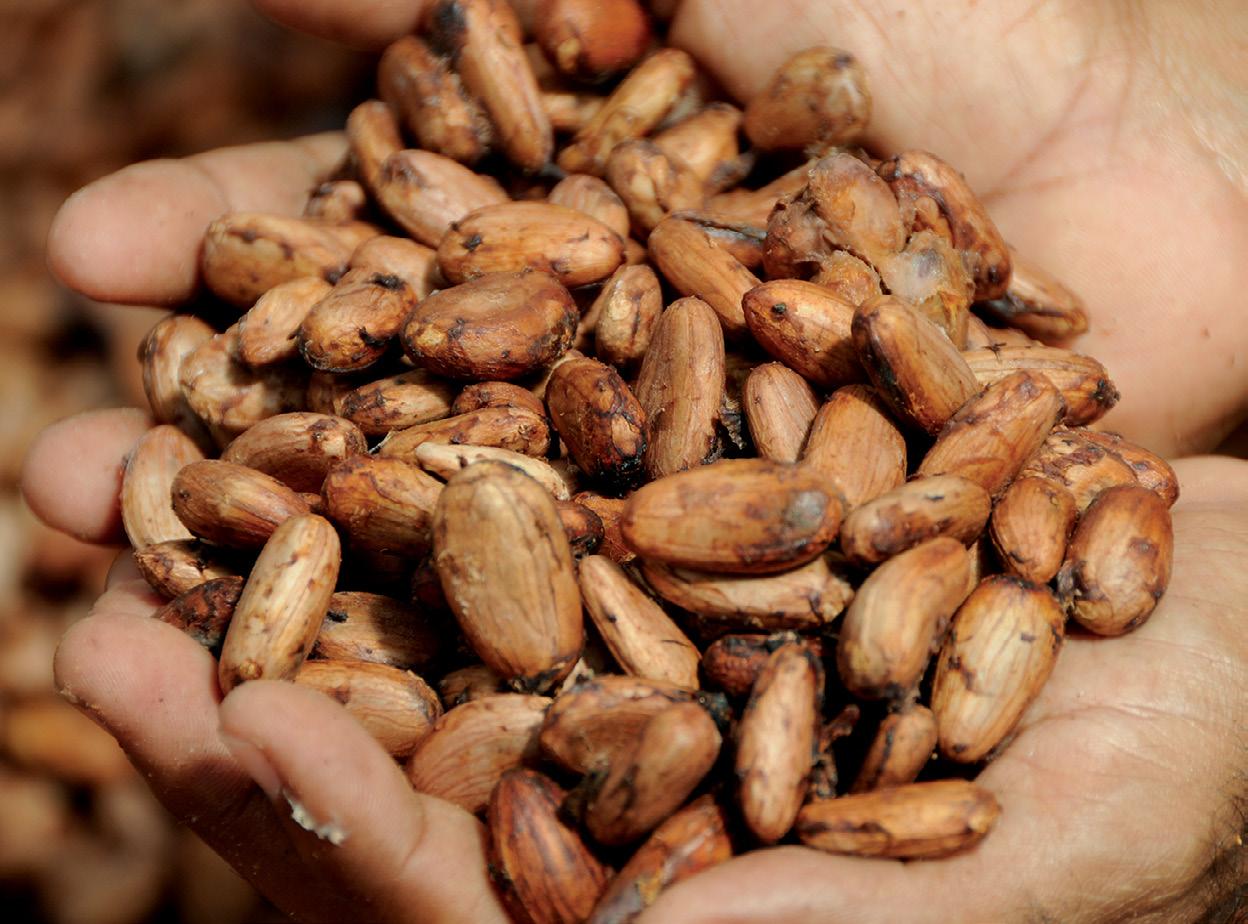
They started out buying and selling rice, cocoa, and other farm products domestically, and later began farming the trees that produce cacao. Back then, exports of cocoa were reserved for strongman Rafael Trujillo, who ruled the nation from 1930 until 1961.
In the 1970s, Rizek Cacao became the country’s largest cocoa producer and top exporter of dried cocoa beans, selling to large chocolate makers globally. But the family saw potential in fermenting the beans to offer a product with greater value-added. In the 1990s, they built a sophisticated center to centralize fermentation and processing for their own beans and for other farmers. The facility now serves as a cocoa research center and attracts doctoral students from Florida, Italy, and beyond, says Massimiliano Wax, an international cacao expert who now works with the Rizeks.
Like varieties of grapes in wine,

fermentation brings out distinct profiles of different types of cacao. Cocoa is not native to Dominican Republic, so the nation grows trees that came from Brazil, Colombia, Ecuador, and other nations, producing a wide palette of flavors and mixing “a fantastic cocktail” of chocolate, says Wax.
In the 2000s, the Rizeks began making their own artisanal chocolates from those blends, creating the brand Kahkow. Then, tapping surging tourism, they launched the Chocolate Museum in Santo Domingo’s colonial zone to help educate tourists and locals alike. In 2015, they added the Kahkow Experience at the museum, offering cocoa-related activities that include a film on cocoa history, a mini-factory to customize your own chocolate bars, and a studio to make soap from cocoa butter.
Fourth-generation Nadia Rizek, after finishing college in New York, started the
U.S. division to supply artisanal “bean-tobar” producers on the U.S. east coast. She launched the Brooklyn shop in 2019. The company has just added an outlet in Spain to supply “bean-to-bar” makers in Europe too.
“We want to accompany the evolution of the chocolate market,” says Wax, vice president of Rizek Cacao, which now employs more than 500 people. “Until some 10 years ago, chocolate was almost exclusively produced by big multinational companies. Now, smaller artisanal chocolate producers are proliferating worldwide.” Serving those customers surely will require lots of logistics, the next Dominican frontier. l
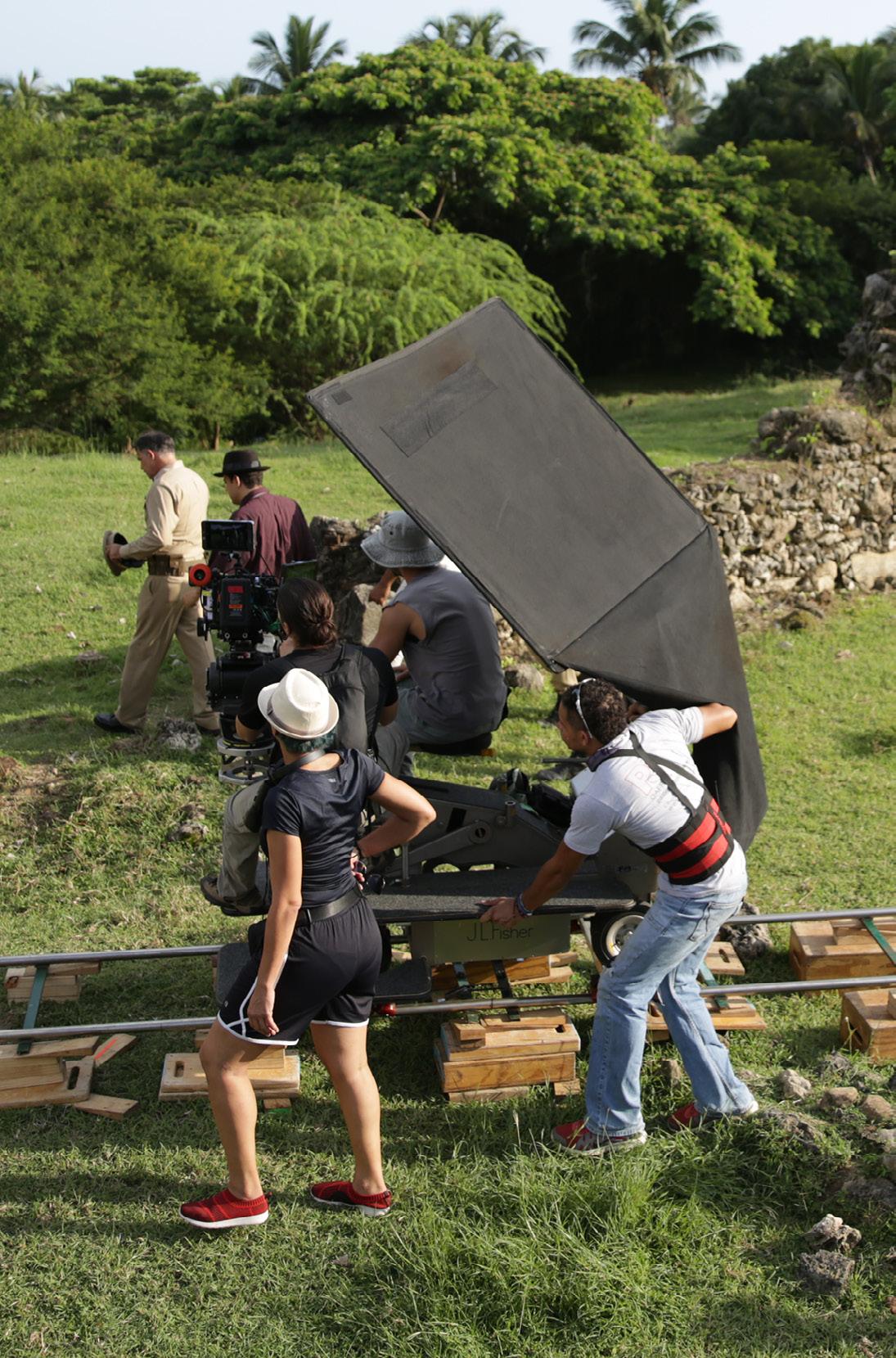


If you’ve seen the latest Jennifer Lopez and Sandra Bullock movies, you’ve been looking at the Dominican Republic, now one of the world’s hottest locations for filming, thanks to generous new tax breaks.
Since 2018, the Dominican government has boosted incentives for film projects in the country, ushering in a rush of new productions including the upcoming action movie remake “Road House” starring Jake Gyllenhaal and the much-awaited bio-drama “Nyad” starring Annette Bening and Jodie Foster.
Many of the movies use the country’s state-of-the-art facilities opened in 2014 in a joint venture with the UK’s Pinewood Studios, known for James Bond and Harry Potter films. The Dominican complex hosts the only horizon water tank in the Americas, an enormous above-ground pool set next to the sea where “through the lens, it looks like you’re right in the middle of the ocean,” says Maria Valentina Avellaneda, marketing manager at Lantica Media, which runs Pinewood DR Studios. Filming in the tank is easier than in
open sea because of machines to control waves, storms, and other conditions in water that’s not salty.
The Dominican Republic long has welcomed film productions, with Santo Domingo’s Spanish colonial zone sometimes standing in for Cuba, as in “The Godfather II” released in 1974 and “Havana” in 1990. (Communist-led Cuba is largely off-limits for U.S. filming because of the U.S. embargo on the island.)
But production really took off after the Dominican government passed an incentives law in 2010 that basically offers a 25 percent rebate on most filming expenses. The law helped motivate the nation’s Vicini Group, which made its fortune in sugar, to partner with Pinewood and invest more than $50 million to build Pinewood DR Studios on 43-acres of its land in Juan Dolio, about 40 miles east of Santo Domingo. Besides the horizon water tank, the complex now hosts three sound stages, with a fourth planned. Jennifer Lopez worked on “Shotgun Wedding” there.
“The plan is to host a film industry hub and later an entire city on
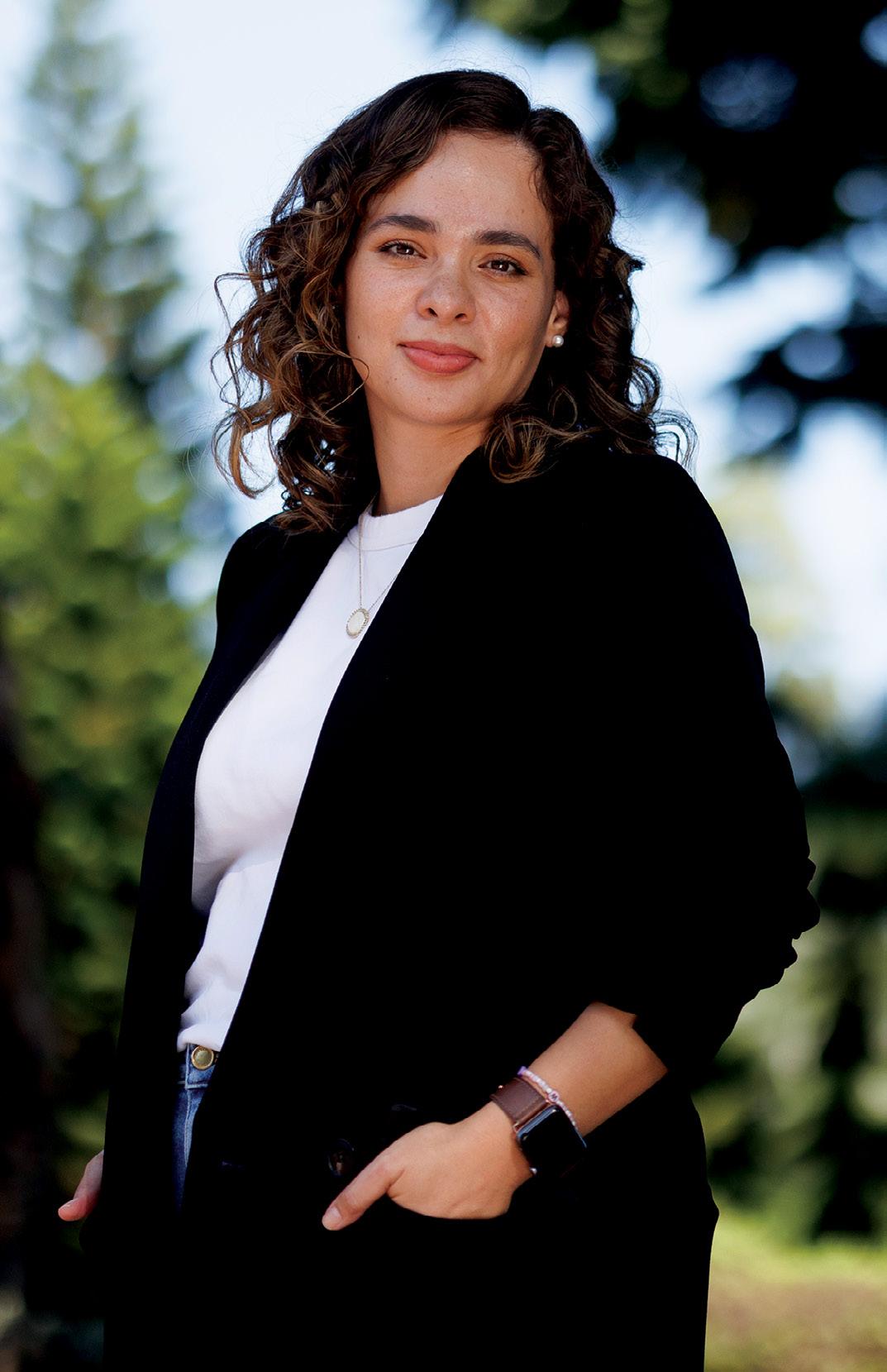
The plan is to host a film industry hub and later an entire city on the lands around Pinewood DR Studios...
MARIA VALENTINA AVELLANEDA, MARKETING MANAGER, LANTICA MEDIA
the lands around Pinewood DR Studios,” says Avellaneda, envisioning workshops, residences and other facilities for crews and families.
HOW THE INCENTIVES BOOST LOCAL CREWS, LOCAL MOVIES
The initial film incentives law catapulted the number of film productions in the country in the 2010s to 195, about twice the number produced in the century before. The tally exploded in the 2020s, with added incentives and a speedy re-opening after COVID. More than 100 productions were filmed in the Dominican Republic in 2021 alone, with their spending topping $260 million, industry reports show.
“We were the first film destination to open after COVID, and we proved you can make a production safely and affordably here. It’s been a snowball of growth since, with not just more films, but bigger ones,” says Avellaneda. She estimates the “The Lost City of D” with Sandra Bullock had a $60 million-plus budget and used 600 local crew and 200 crew from the UK and US.

SHOTGUN WEDDING, a romantic comedy starring Jennifer Lopez and Josh Duhamel; Monkeyland near Punta Cana and ANI Private Resorts, released 2023.
THE LOST CITY OF D, a romantic comedy starring Sandra Bullock, Channing Tatum, and Daniel Radcliffe; Samana province and Pinewood DR Studios, released 2022.
OLD, a horror thriller starring Gael Garcia Bernal and Vicky Krieps; Playa Del Valle beach on Samana peninsula and Pinewood DR Studios, released 2021.
FAST AND FURIOUS #3.5/4 AND #7, action films starring Vin Diesel; beaches in Montecristi and Santo Domingo’s seaside Malecon, released 2009 and 2015.
JURASSIC PARK, science fiction action film starring Sam Neill and Laura Dern; Amber Museum in Puerto Plata, released 1993.
HAVANA, drama starring Robert Redford and Lena Olin; Santo Domingo’s colonial zone, released 1990.
APOCALYPSE NOW, war film starring Marlon Brando and Robert Duvall; La Romana near the Chavon River, released 1979.
THE GODFATHER II, starring Al Pacino and Marlon Brando; Santo Domingo’s colonial zone and Hotel Embajador, released 1974.
NYAD, sports biography drama starring Annette Benning and Jodie Foster; locations include Pinewood DR Studios.
ROAD HOUSE, a re-imagining of the 1989 action film, starring Jake Gyllenhaal and Daniela Melchior; Pinewood DR Studios.
ARTHUR THE KING, an adventure film starring Mark Wahlberg and Simu Liu; Santo Domingo’s colonial zone.

While most productions come from overseas – even filming of a version of reality TV show “Survivor” for Turkey – there’s been a boom in home-grown movies too. The incentives law offers the 25 percent tax credit when foreign groups work through a local production company. That’s encouraged locals to enter the industry, with many universities adding film studies to meet rising demand.
Elsa Turull was among the first to seize the production opportunities. A decade ago, she created Larimar Films, named for the semi-precious stone native to the Dominican Republic that has a light-blue color like the Caribbean Sea. She got help through a Dominican friend in Hollywood, California.
Besides assisting foreign productions, Larimar Films now has made several movies of its own, including “Quien Manda?,” a comedy about an independent woman, and “En Tu Piel,” a drama about infidelity (available on Amazon Prime). Dominican films now show in such festivals as Cannes and Venice, she says.
TAX BREAKS: PROXIMITY, DIVERSE LOCALES, HOTELS, AIRLINKS – AND CHALLENGES
Turull cites five reasons – beyond tax breaks – as to why her country is ideal for filming. The first is location, being two hours by jet from Miami and 3.5 hours from New York. Second is the diversity of locales near one another – beaches, deserts, the Spanish colonial zone, mountains, factories, and more. “You can drive two or three hours between locations, not seven as in some countries. And that makes for big savings,” she says.
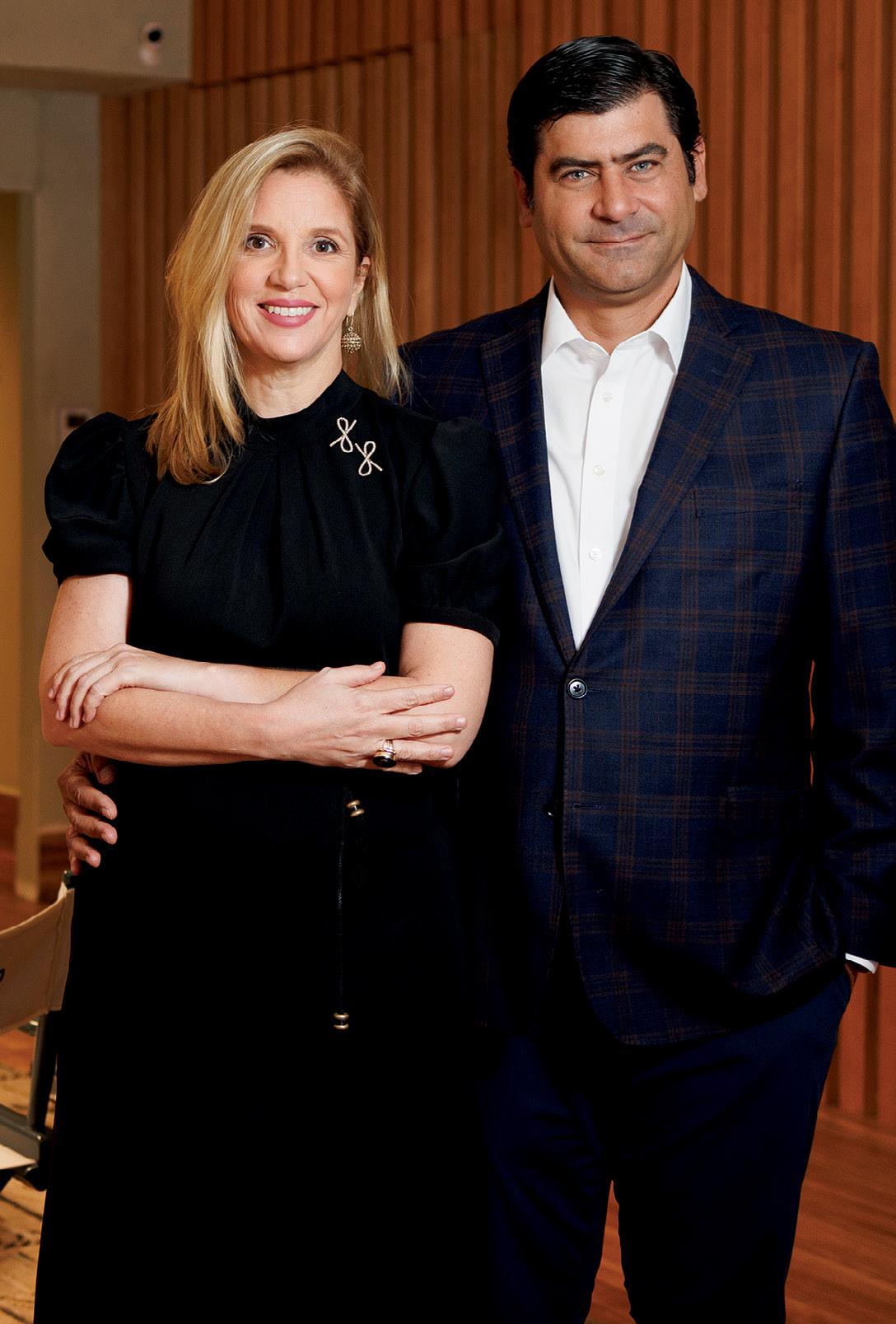
You can drive two or three hours between locations, not seven as in some countries. And that makes for big savings.
Tourism and connectivity also help. With ample hotels nationwide, crews can readily find lodging near film locations. Actors and crews can easily fly in and out, with its abundant flights for tourists, says Turull. Plus, costs are cheaper than Hollywood, even as local crews earn good wages by Dominican standards.
Still, there are challenges to growth. The government tackled a key stumbling block in 2018 by slashing the withholding tax on pay to non-residents, down from 27 percent to 1.5 percent. That’s helped draw Hollywood stars who earn mega-salaries like J.Lo. There’s also a need to train more local talent. Salaries are rising because of limited supply, shrinking cost savings compared to such rivals as Atlanta, Toronto, and Colombia, says engineer Antonio Alma, Turull’s husband who recently left a corporate job for film.
Meanwhile, look out for the upcoming adventure movie “Arthur the King,” starring Mark Wahlberg, filmed partly in Santo Domingo’s colonial zone. l

Ideally situated along 435 linear feet of pristine beach and immersed in unforgettable ocean views, The St. Regis, represent the height of exquisite living. Where skylinedefining architecture, visionary style, flawless craftsmanship, and signature St. Regis service and rituals create a singular experience of effortless luxury in a glamorous setting.
An exquisite collection of 189 limitededition ultra-luxury homes, meticulously crafted with an uncompromising commitment to quality. Designed around you, the resident, for ultra-livability. The Residences at 1428 Brickell are a private sanctuary created for ultimate discretion. Optimally located within Brickell, Miami’s vibrant and burgeoning financial district.

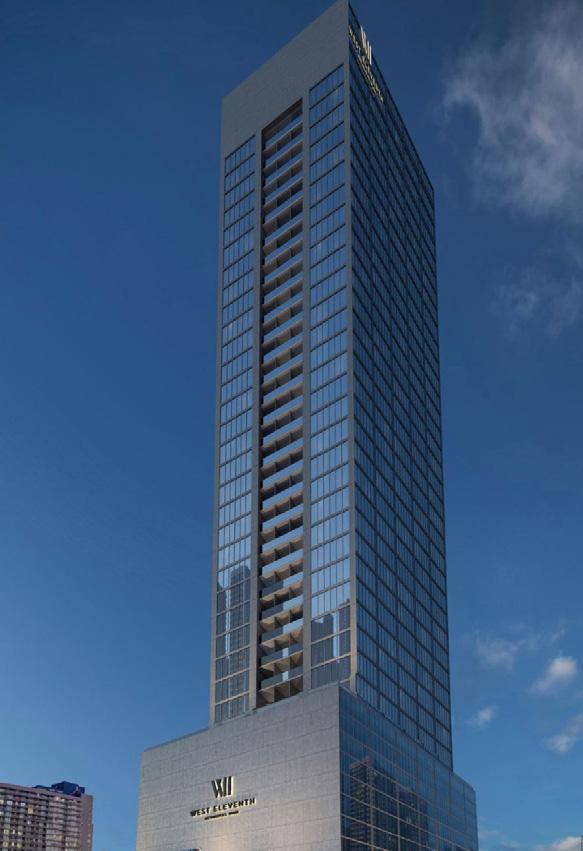
The first centrally managed luxury condo residences to grant owners the option to host 365 days on Airbnb.
West Eleventh has reimagined luxury condo home ownership by providing true living flexibility. Each fully furnished residences.



THE NATION’S SPORT OBSESSION FEEDS PLAYERS TO THE U.S.
BOCA CHICA, Dominican RepublicForget cigars, medical devices or even tourism services. For lovers of baseball, the most important export from the Dominican Republic is its baseball players.
This Caribbean nation sends more players to U.S. Major League Baseball teams than any other country besides the United States itself. About 500 Dominicans players now sign contracts with MLB organizations yearly, not just with MLB’s top 30 teams but also its minor leagues and other professional clubs, says the MLB Commissioner’s office in Dominican Republic, its only baseball operations office outside the U.S.
Drive past the turquoise waters and white sands of Boca Chica beach, down a windy inland road, and you’ll find outpost after outpost of MLB teams including the Miami Marlins. The Marlins last October opened the country’s newest MLB academy,
built at a cost of $15 million, to develop Dominican players as well as players from nearby nations such as Venezuela, Colombia, and the Netherlands Antilles.
The 35-acre Marlins academy resembles a college campus. There are modern dorms that sleep about 100 players, plus classrooms with computers, a well-stocked cafeteria, and recreation rooms with ping-pong tables, TVs, and videogames. Players at the academy also have access to fully-equipped gyms, weight rooms, batting and pitching practice areas, three baseball fields and coaches that help with everything from how to bat to their nutrition. Mornings begin with classes in varied subjects, including English.
For teens at the academy, it’s typically their first time away from home. Many come from modest means and have never had access to so much quality food – tuna-fish cans stacked high, protein shakes and pista-
The Dominican Republic has become the mecca for baseball internationally..
MAJOR LEAGUE BASEBALL COMMISSIONER’S OFFICE
PHOTOS: THE MIAMI MARLINS BASEBALL ACADEMY IS A 35-ACRE COLLEGE CAMPUS THAT CAN HOUSE 100 PLAYERS. FACILITIES INCLUDE A FULLY EQUIPPED GYM, BATTING AND PITCHING PRACTICE AREAS AND RESIDENTIAL DORMITORIES WITH CAFETERIA.
chios available anytime. They’ve also never had access to the abundant, quality gear they receive: shoes, uniforms and practice wear. Some are so endeared to staffers they call them “aunt” and “uncle.” Baseball for the talented youth represents both a passion and a possibility to make it big financially.
This country is the only one outside the U.S. where all 30 MLB teams have academies, and “thanks to this, the Dominican Republic has become the mecca of baseball internationally,” says the local MLB Commissioner’s Office, which helps regulate and facilitate club operations in the country.
There’s big money at stake. The latest economic impact study, carried out in 2019, estimates the MLB and its teams spend $367 million a year in the country, including academy outlays and signing bonuses for players, among other expenses. They also contribute 1,200 direct jobs and thousands more indirect jobs to the Dominican economy, according to the MLB Commissioner’s Office.
Dominican baseball stars in the US often re-invest back home too. Hall of Famer Pedro Martinez, who grew up in one-room house with five siblings, helped re-develop his Santo Domingo neighborhood of Manoguayabo. The Boston Red Sox pitcher has constructed homes, schools, a window factory, and a baseball field. Hall
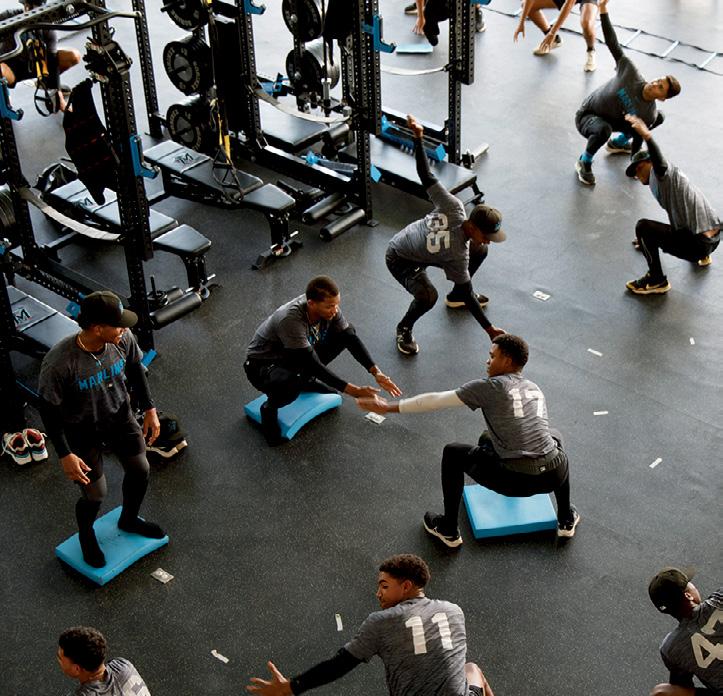



of Famer Vladimir Guerrero built so much in his humble hometown of Don Gregorio de Nizao, NPR reports, that the former Los Angeles Dodger outfielder opened a concrete block factory, a trucking firm, and a hardware store. Of course, not all the players at academies make their way to professional baseball, even to the clubs that feed into MLB’s 30 elite teams. By some estimates, just 4 percent get into those ranks. And there’s concern that academies should do more to prepare trainees with skills for a life outside baseball. Pitcher Martinez himself now focuses much of his foundation’s work on educational needs in his homeland.
“The main step our country needs,” Martinez told a Washington, D.C. event this February led by Rep. Adriano Espaillat, (D-NY) the first Dominican-born federal lawmaker, “[is] to open doors throughout the world is education.” The theme for the Capitol Hill event was “Dominicans batting with bases loaded.”
Professional baseball players certainly seem to be educating themselves more on their rights. In December, the Major League Baseball Players Association, which also represents minor leaguers, opened its first international office. It’s located, of course, in the Dominican Republic. l

In today’s fast-paced market, the only way to close the gap with your trading partners is to improve the supply chain. To do this, you will need a group of dedicated, hardworking professionals with 40 years of experience in logistics and ocean transportation. You will need more than just excellent customer service. You will want to work with a company striving to be better and more innovative. At Seaboard Marine, your customers are closer because our customers are at the center of everything we do.